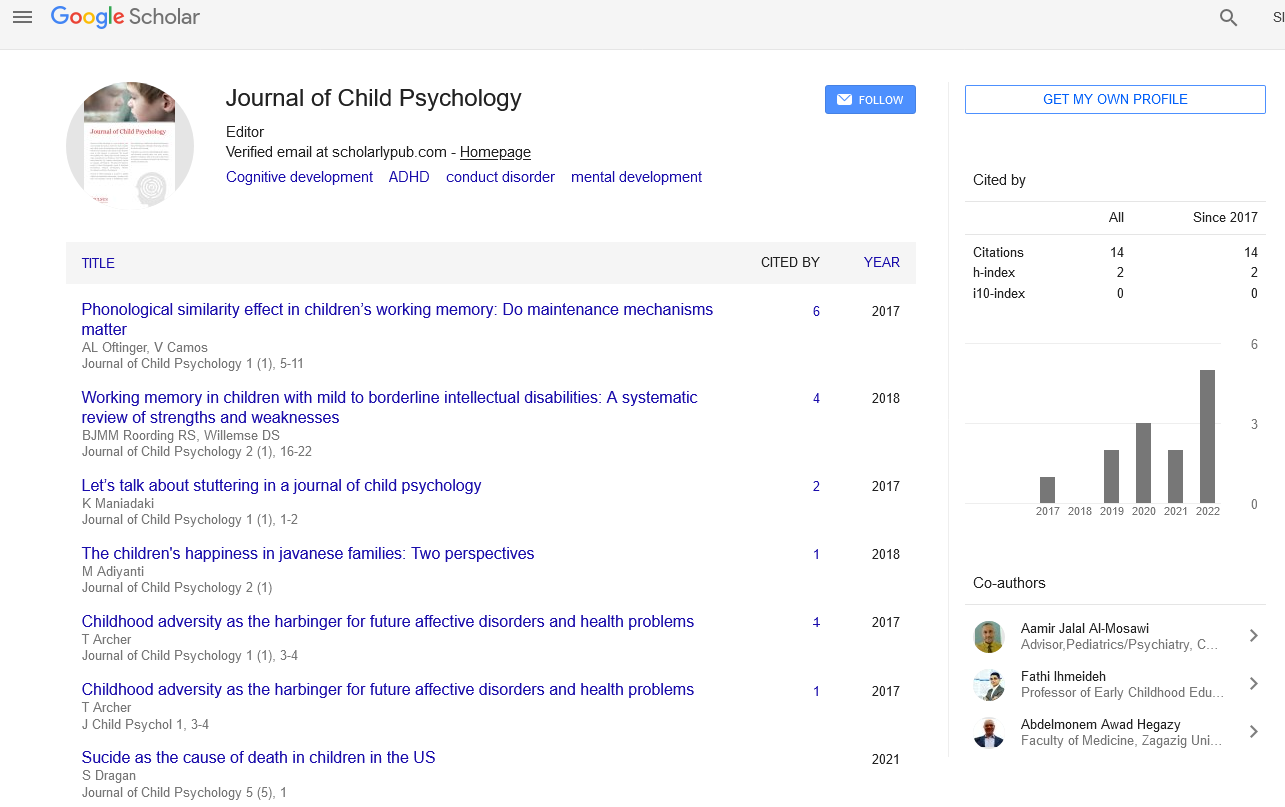Autism Spectrum Disorder (ASD) detection during young age using a targeted questionnaire
Received: 27-Jul-2021 Accepted Date: Aug 10, 2021; Published: 17-Aug-2021
This open-access article is distributed under the terms of the Creative Commons Attribution Non-Commercial License (CC BY-NC) (http://creativecommons.org/licenses/by-nc/4.0/), which permits reuse, distribution and reproduction of the article, provided that the original work is properly cited and the reuse is restricted to noncommercial purposes. For commercial reuse, contact reprints@pulsus.com
Commentary
Autism Spectrum Disorder can sometimes be detected in children at the age of 18 months or even younger. A diagnosis by an experienced professional by the age of 2 can be reliable. But so many children do not receive a diagnosis until they are much older. This delay means that children with an ASD might not get the assistance they need at the earliest. The sooner the treatment services can begin; the better will be the child condition.
Parents and caretakers are the foremost reliable sources of information about the children’s development. Evidence based screening tools that incorporate parent reports can facilitate structured communication between parents and healthcare providers to discover parent concerns, increase parent and healthcare provider observations of the child’s development, and increase parent awareness. Screening children and providing parents with anticipatory guidance promote positive parent child relationships.
A set of developmental screening tools are designed to help identify children who might have ASD. The domain, psychometric properties, sensitivity, specificity and the characteristics of the child are taken into consideration while selecting a developmental screening tool. Some of screening tools for general development and ASD are Ages and Stages Questionnaires (ASQ), Communication and Symbolic Behavior Scales (CSBS), and Screening Tool for ASD in Toddlers and Young Children (STAT).
Screening tools do not provide in depth evidence of developmental delays and do not result in diagnoses. A positive screening result should be followed by a thorough diagnosis. Diagnostic tools usually rely on parents or caregivers descriptions of their child’s development and a professional’s observation of the child’s behaviour. Some of diagnostic tools are ASD Diagnostic Observation Schedule, Childhood ASD Rating Scale (CARS).
New research suggests that ASD can be detected at 18-30 months using the Quantitative Checklist for ASD in Toddlers (Q-CHAT).
Toddlers were screened starting at 18 months and followed up at the end of 4 years. The Q-CHAT includes questionnaires that assess repetitive and sensory behaviours, language development, and other aspects of social communication behaviour. In effect, this uses a five point scale of frequency, allowing for variability in responses and a better understanding of the distributions across the specific traits.
In the new research, during the phase 1, the caregivers or parents were invited to complete the Q-CHAT questionnaire on their child at 18-30 months. In phase two, the batch was followed up when the children were 4, using the Childhood ASD Screening Test (CAST), and a questionnaire asking whether any of the children had been diagnosed with any developmental conditions, including ASD.
The sensitivity of the Q-CHAT in predicting ASD at phase two is 44%, and the specificity is 98%. Results also showed that the ‘positive predictive value is 28%.
These results found out that using the Q-CHAT, early detection and diagnosis of ASD is possible. Some children, who were classified as autistic during phase 1, are referred to treatment and scored at or above the cutoff point. Q-CHAT did not identify ASD in all children participated during toddlerhood who were later diagnosed with ASD at age 4. This somehow shows that some autistic children do not show symptoms of sufficient severity until later in childhood.
This study reflects ASD can be detected during the toddler years, and small proportion of other children may be identified as autistic later in their childhood. Repetitive screening and observation across developmental years would be a better approach rather than screening at a single time point. Screening for ASD at regular interval gaps in toddlerhood helps children to be diagnosed early into doctor intervention, which can lead to better outcomes.





